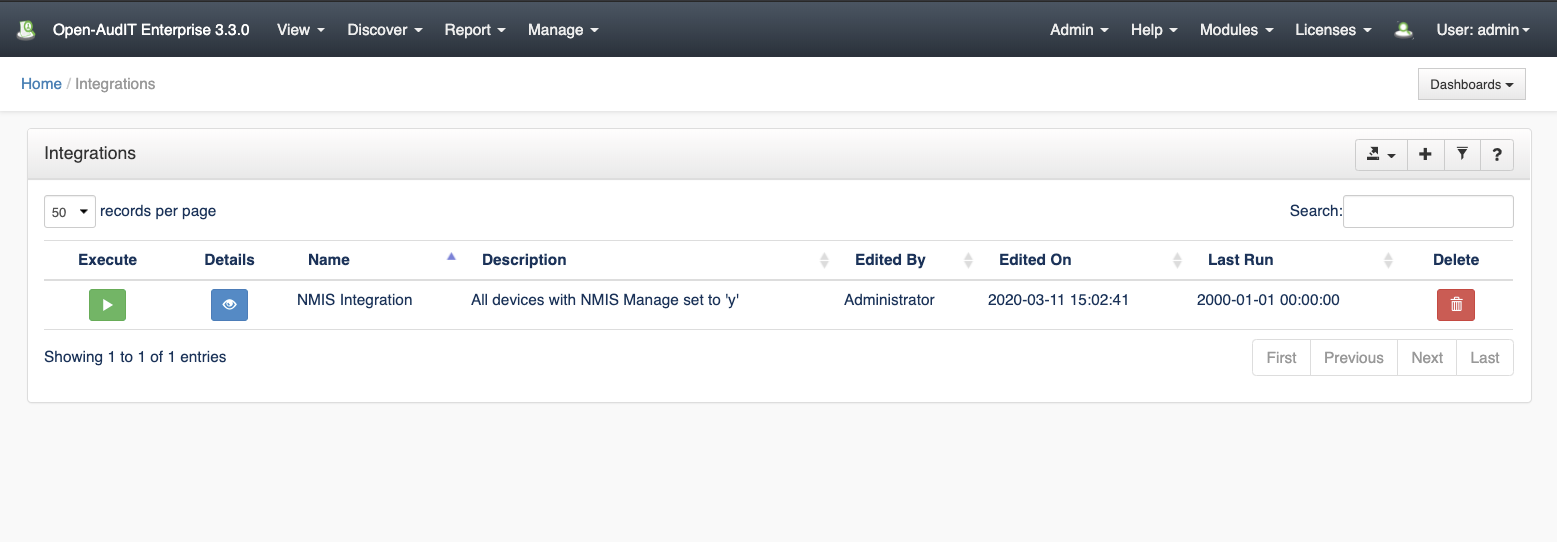...
Go to menu: Manage-> Integrations -> List Integrations.
You will see a list of integrations. You can view an integration by clicking on the blue view icon. You can also edit or delete Integrations.
Database Schema
The database schema
...
can
...
be found in the application
...
is the user has database::read permission by going to menu: Admin -> Database -> List Tables, then clicking on the
...
details button for the table.
| No Format |
|---|
CREATE TABLE `integrations` (
`id` int(10) unsigned NOT NULL AUTO_INCREMENT,
`name` varchar(100) NOT NULL DEFAULT '',
`org_id` int(10) unsigned NOT NULL DEFAULT '1',
`description` text NOT NULL,
`type` varchar(45) NOT NULL DEFAULT 'nmis',
`options` longtext NOT NULL,
`last_run` datetime NOT NULL DEFAULT '2000-01-01 00:00:00',
`edited_by` varchar(200) NOT NULL DEFAULT '',
`edited_date` datetime NOT NULL DEFAULT '2000-01-01 00:00:00',
PRIMARY KEY (`id`)
) ENGINE=InnoDB DEFAULT CHARSET=utf8; |
A typical entry looks as below.
| No Format |
|---|
id: 1
name: My Test Integration
org_id: 1
description: Just Testing
type: nmis
options: {}
last_run: 2019-06-01 10:10:10
edited_by: system
edited_date: 2019-06-01 09:00:00 |
API / Web Access
You can access the
...
collection using the normal Open-AudIT JSON based API. Just like any other collection. Please
...
see The Open-AudIT API documentation for further details
...
Access is provided as part of a roles permissions. Applications is a standard resource and can have create, read, update and delete permissions.
...
.
...
API Routes
...
Request Method
...
ID
...
Action
...
Resulting Function
...
Permission Required
...
URL Example
...
Notes
...
Example Response
...
Web Application Routes
...
Request Method
...
ID
...
Action
...
Resulting Function
...
Permission Required
...
URL Example
...
Notes
...
